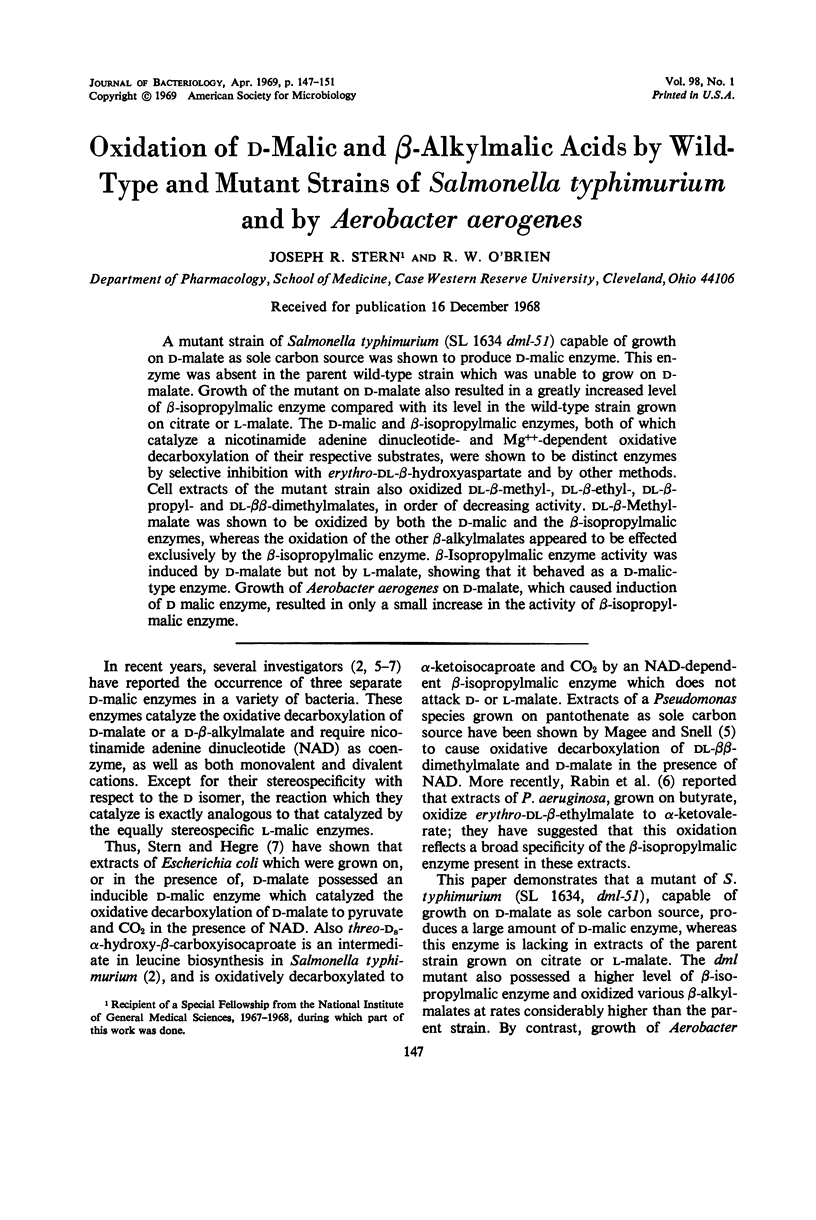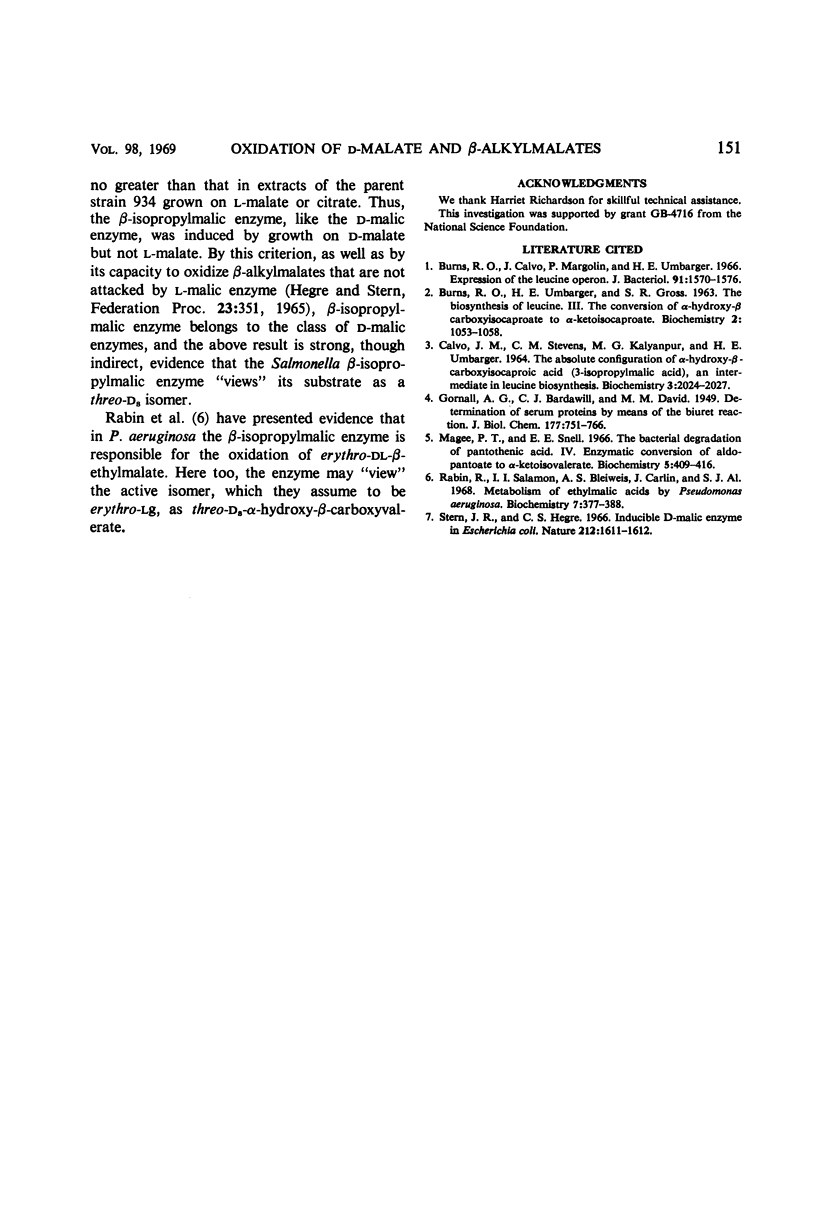Abstract
A mutant strain of Salmonella typhimurium (SL 1634 dml-51) capable of growth on d-malate as sole carbon source was shown to produce d-malic enzyme. This enzyme was absent in the parent wild-type strain which was unable to grow on d-malate. Growth of the mutant on d-malate also resulted in a greatly increased level of β-isopropylmalic enzyme compared with its level in the wild-type strain grown on citrate or l-malate. The d-malic and β-isopropylmalic enzymes, both of which catalyze a nicotinamide adenine dinucleotide- and Mg++-dependent oxidative decarboxylation of their respective substrates, were shown to be distinct enzymes by selective inhibition with erythro-dl-β-hydroxyaspartate and by other methods. Cell extracts of the mutant strain also oxidized dl-β-methyl-, dl-β-ethyl-, dl-β-propyl- and dl-ββ-dimethylmalates, in order of decreasing activity. dl-β-Methyl-malate was shown to be oxidized by both the d-malic and the β-isopropylmalic enzymes, whereas the oxidation of the other β-alkylmalates appeared to be effected exclusively by the β-isopropylmalic enzyme. β-Isopropylmalic enzyme activity was induced by d-malate but not by l-malate, showing that it behaved as a d-malictype enzyme. Growth of Aerobacter aerogenes on d-malate, which caused induction of d malic enzyme, resulted in only a small increase in the activity of β-isopropylmalic enzyme.
Full text
PDF




Selected References
These references are in PubMed. This may not be the complete list of references from this article.
- BURNS R. O., UMBARGER H. E., GROSS S. R. THE BIOSYNTHESIS OF LEUCINE. III. THE CONVERSION OF ALPHA-HYDROXY-BETA-CARBOXYISOCAPROATE TO ALPHA-KETOISOCAPROATE. Biochemistry. 1963 Sep-Oct;2:1053–1058. doi: 10.1021/bi00905a024. [DOI] [PubMed] [Google Scholar]
- Burns R. O., Calvo J., Margolin P., Umbarger H. E. Expression of the leucine operon. J Bacteriol. 1966 Apr;91(4):1570–1576. doi: 10.1128/jb.91.4.1570-1576.1966. [DOI] [PMC free article] [PubMed] [Google Scholar]
- CALVO J. M., STEVENS C. M., KALYANPUR M. G., UMBARGER H. E. THE ABSOLUTE CONFIGURATION OF ALPHA-HYDROXY-BETA-CARBOXYISOCAPROIC ACID (3-ISOPROPYLMALIC ACID), AN INTERMEDIATE IN LEUCINE BIOSYNTHESIS. Biochemistry. 1964 Dec;3:2024–2027. doi: 10.1021/bi00900a043. [DOI] [PubMed] [Google Scholar]
- Magee P. T., Snell E. E. The bacterial degradation of pantothenic acid. IV. Enzymatic conversion of aldopantoate to alpha-ketoisovalerate. Biochemistry. 1966 Feb;5(2):409–416. doi: 10.1021/bi00866a004. [DOI] [PubMed] [Google Scholar]
- Rabin R., Salamon I. I., Bleiweis A. S., Carlin J., Ajl S. J. Metabolism of ethylmalic acids by Pseudomonas aeruginosa. Biochemistry. 1968 Jan;7(1):377–388. doi: 10.1021/bi00841a048. [DOI] [PubMed] [Google Scholar]


